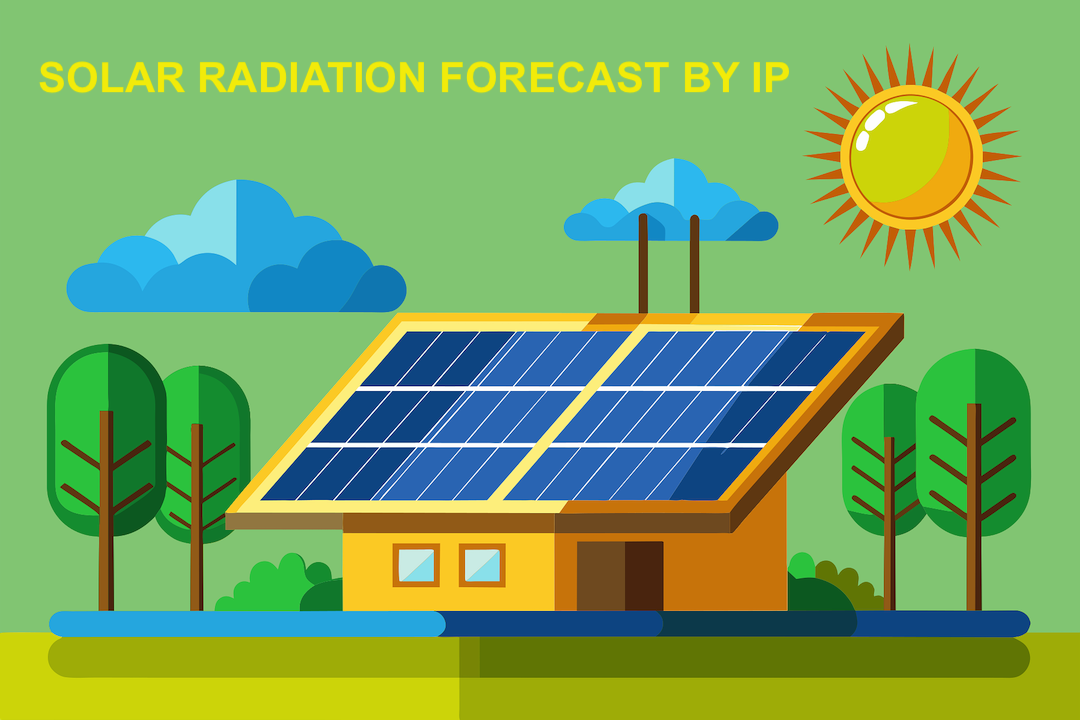
Solar radiation forecasting is a critical aspect of renewable energy management, particularly in the field of solar energy. With the advent of Internet Protocol (IP) technology, it has become possible to forecast solar radiation more accurately and efficiently. This article delves into the intricacies of solar radiation forecasting by IP, exploring its significance, the technology behind it, and its practical applications.
The Importance of Solar Radiation Forecasting
Solar radiation forecasting is integral to the efficient operation of solar power systems. It allows for better management of the energy produced, leading to more effective distribution and storage. Moreover, accurate forecasting can significantly reduce the costs associated with energy production and consumption.
With the increasing reliance on renewable energy sources, the demand for precise solar radiation forecasting has grown. According to the International Energy Agency, solar energy is expected to become the world's largest source of electricity by 2050. This underscores the importance of accurate solar radiation forecasting in the future of energy management.
Understanding IP Technology
Internet Protocol (IP) is a set of rules that govern the format of data sent over the Internet or other networks. It allows devices to send and receive data across shared networks. In the context of solar radiation forecasting, IP technology can be used to gather and analyze data from various sources, improving the accuracy of forecasts.
IP technology offers several advantages in solar radiation forecasting. It enables real-time data collection and analysis, which is essential for accurate forecasting. Furthermore, it allows for the integration of multiple data sources, providing a more comprehensive view of solar radiation patterns.
How IP Technology Works in Solar Radiation Forecasting
IP technology in solar radiation forecasting involves the use of APIs (Application Programming Interfaces) to gather and analyze data. APIs are sets of rules that allow different software applications to communicate with each other. They can be used to access data from various sources, such as weather stations, satellites, and other sensors.
One such API is the Weatherbit - Weather Forecast API, which provides access to a wealth of weather data, including solar radiation levels. The following Python code snippet demonstrates how to use this API in combination with the Iplocation API to retrieve solar radiation data:
import requests
weatherbit_api_key = 'WEATHERBIT_API_KEY'
# Retreive lat/lon from the free iplocation.net API.
response_iplocation = requests.get('https://api.iplocation.net/?ip=XX.XX.XX.XX')
ip_data = response.json()
lat = data['data'][0]['latitude']
lon = data['data'][0]['longitude']
# Get Solar radiation data from Weatherbit.
response = requests.get('https://api.weatherbit.io/v2.0/forecast/hourly?
lat={lat}&lon={lon}&key={api_key}')
data = response.json()
for d in data['data']:
solar_radiation = d['solar_rad']
print(f'Solar radiation: {solar_radiation} W/m^2')
This code sends a GET request to the API, specifying the latitude and longitude of the location for which the solar radiation data is required. The API responds with a JSON object containing the forecast data, from which the solar radiation level is extracted.
Applications of IP Technology in Solar Radiation Forecasting
IP technology has a wide range of applications in solar radiation forecasting. It can be used in grid management, where accurate forecasts are crucial for balancing supply and demand. It can also be used in the design and operation of solar power systems, helping to optimize energy production and reduce costs.
Moreover, IP technology can play a significant role in climate modeling and weather forecasting. By providing access to real-time solar radiation data, it can contribute to more accurate and timely forecasts, benefiting a wide range of sectors, from agriculture to disaster management.
Conclusion
Solar radiation forecasting by IP represents a significant advancement in the field of renewable energy. By leveraging IP technology, it is possible to access and analyze a vast array of data, leading to more accurate forecasts and more efficient energy management. As the world continues to shift towards renewable energy sources, the importance of technologies like this will only continue to grow.
Whether you're a software developer working on a renewable energy project, a grid manager looking to optimize energy distribution, or a researcher studying climate patterns, understanding and utilizing IP technology in solar radiation forecasting can provide invaluable insights and advantages.
Share this post
Leave a comment
All comments are moderated. Spammy and bot submitted comments are deleted. Please submit the comments that are helpful to others, and we'll approve your comments. A comment that includes outbound link will only be approved if the content is relevant to the topic, and has some value to our readers.

Comments (0)
No comment